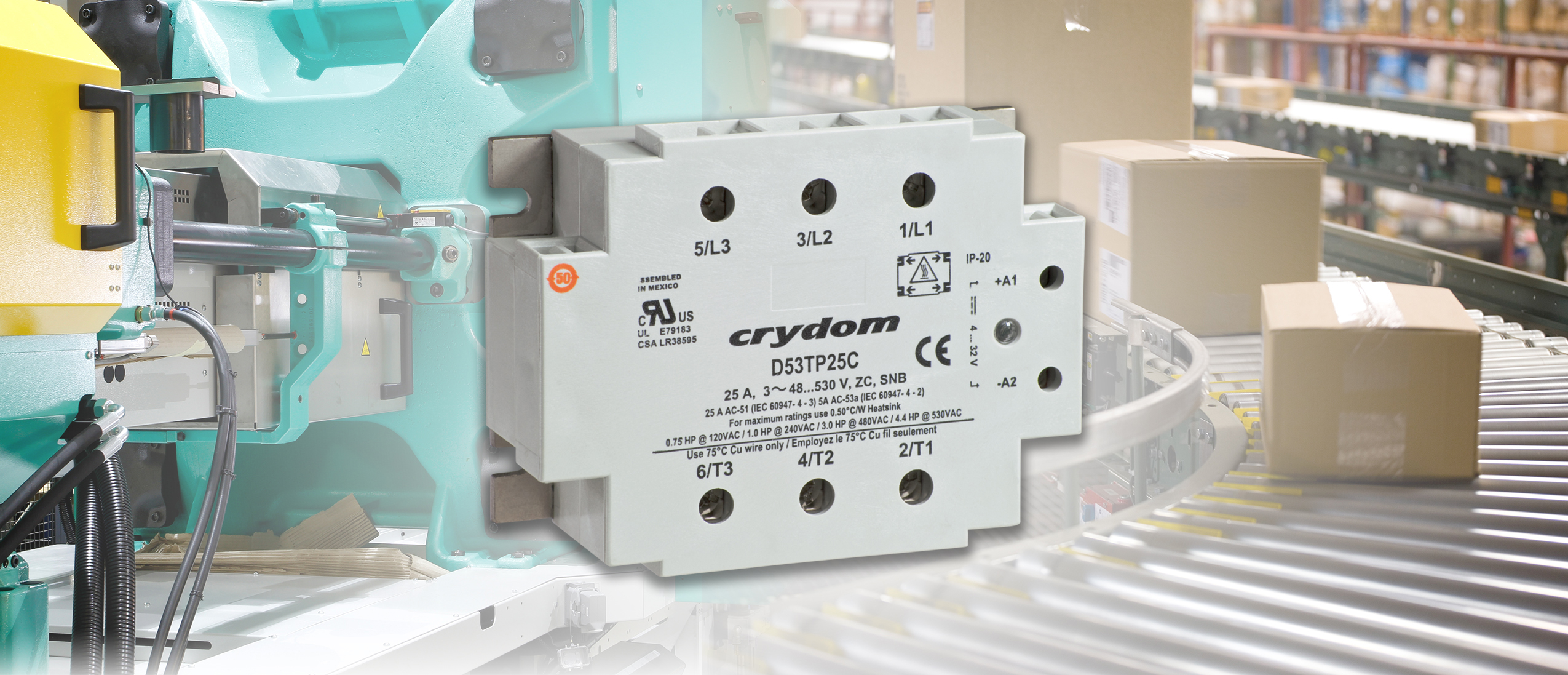
A case for solid state relays: New design integrates thermal protection
By Rogelio Castaneda
Industry Innovation & Technology Manufacturing manufacturing Relays TechnologyAn integrated thermostat ensures the relay always operates in a safe or protected mode.

Sensata’s 53TP solid-state relay with thermal protection. PHOTO: SENSATA
What do large conveyor belts, assembly lines, and other complex manufacturing systems have in common? Big and expensive electrical motors that, if they overheat, can be damaged or even destroyed. Most large motor driven machinery requires an attached power supply monitoring and safety device attached to the motor that will sense overheating and then turn the power off.
In many cases, this device is an electrical relay and the two most common types of these devices are electro-mechanical and solid-state relays.
For more than 50 years, electro mechanical relays (EMRs) were the “go-to” solution for managing load circuits used to power assembly lines, conveyor belts and other large electrical and mechanical systems. However, in the last decade or so, solid-state relays (SSRs) have taken a great deal of the market share.
There are significant differences between the two, especially in terms of life span.
EMRs are mechanical, making them highly susceptible to magnetic noise, vibration, shock and other outside influences that affect wear and life cycle. In contrast, SSRs are solid state with no moving parts to affect wear or accuracy and offer predictable operation plus longer life.
The average lifespan of electro-mechanical relays is 100,000 to 500,000 cycles compared to 2 million cycles for solid-state relays.
Switching is also faster than EMRs, making them adaptable to a wider range of high power load applications. They operate silently with low input power consumption and produce little electrical interference. Both shock and vibration resistant, they withstand harsh environments and continue to operate accurately and reliably. EMRs need frequent replacement, making them unsuitable for harsh conditions.
Thermal management
Because power continually flows through SSRs, whether they’re open or closed, there’s an ongoing thermal management component to their operation, just like the motors that they control. Should overheating occur, diagnosing and replacing a damaged SSR takes time, requiring the assembly line or manufacturing system to go offline.
To address the overheating challenge, Sensata has developed a technology that integrates a thermostat into the SSR to ensure the relay always operates in a safe or protected mode.
The new SSR cuts off input circuit power when the temperature goes beyond the specified maximum. Power is automatically turned on again when the temperature has cooled down to within the normal operating range.
This usually occurs within minutes of the initial shutdown and is automatic, while a built-in thermal protection provides a trip before equipment damage occurs.
Thermal protection also troubleshoots design issues in the system by identifying incorrect heat sinking capacity, poor installation resulting in insufficient heat sinking contact, and heat dissipation efficiency.
These SSR designs adapt to a variety of manufacturing applications, such as a conveyor belt where a motor could get stuck or jam, causing an electrical overload.
In this case, the SSR would shut down the conveyor belt as soon as a pre-determined heat threshold was met.
In injection moulding applications where limited space can cause the temperature in the cabinet to rise, the termastat prevents the SSR from overheating if the heatsinking is not adequate.
For heating systems, the thermally protected SSR helps shut down the elements if there’s a problem with the temperature controller that causes a temperature runaway.
SSRs are compatible with control systems, immune to magnetic noise, completely encapsulated and position insensitive, so they’re mountable anywhere within an application – whether sideways or upside down. An SSR with thermal protection is a valuable tool for engineers responsible for manufacturing systems.
This is an edited version of an article submitted by Rogelio Castaneda, engineering director, and Oscar Rivera, design engineer, at Sensata Technologies, a supplier of sensing, electrical protection, control and power management based in Attleboro, Ma.
This article appeared in the November-December 2017 print issue of PLANT Magazine.
